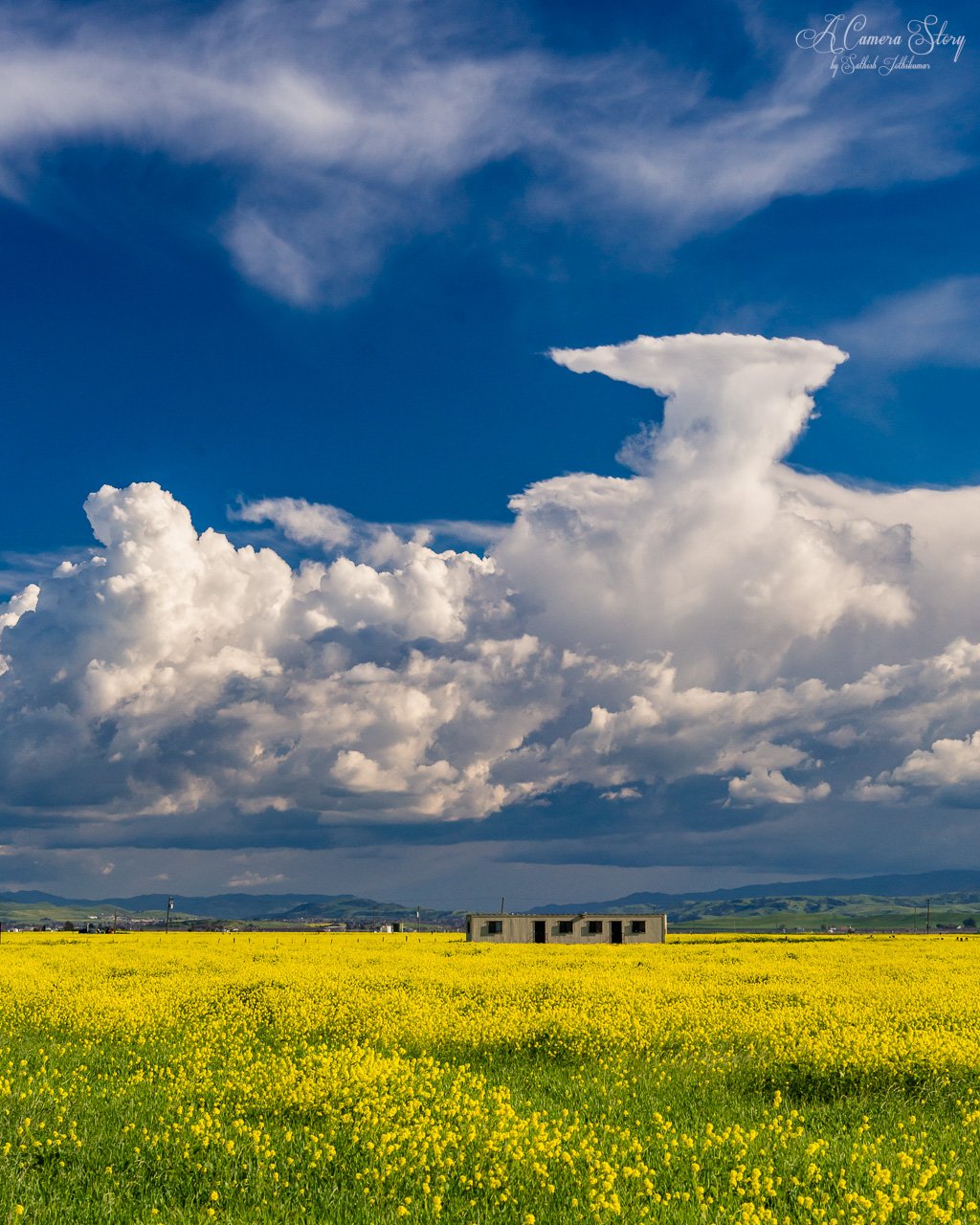The fallow lands in the agricultural plains of California are often a shade of rusty brown through most of the year, a side effect of the hot and dry climate experienced by the interior of the state for most of the year. These conditions do not spare the rounded hills that run along the western spine of the state. But the spring rains rejuvenate these lands, adding a fresh coat of green, and a dash of color from wildflowers.
Wild mustards, with their distinct lemon-yellow blooms, are the first ones to crop up on vast swathes of fallow lands. Soon after, the still-moist meadows proliferate with various flowering plants and spring grasses. The California black oak, a tree well adapted to this climate, acquires a fresh set of leaves after laying dormant all winter, and quickly envelop any mistletoe growing on their branches.
Driving through these lands often provide a window into the past, of how California used to be before it got as densely populated as it is now.
Central Valley
CA USA




